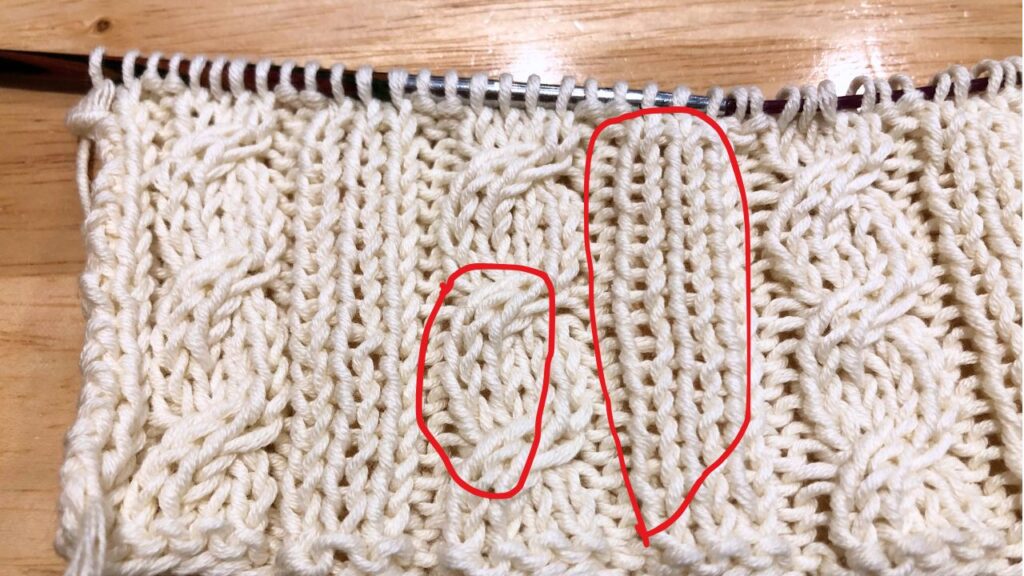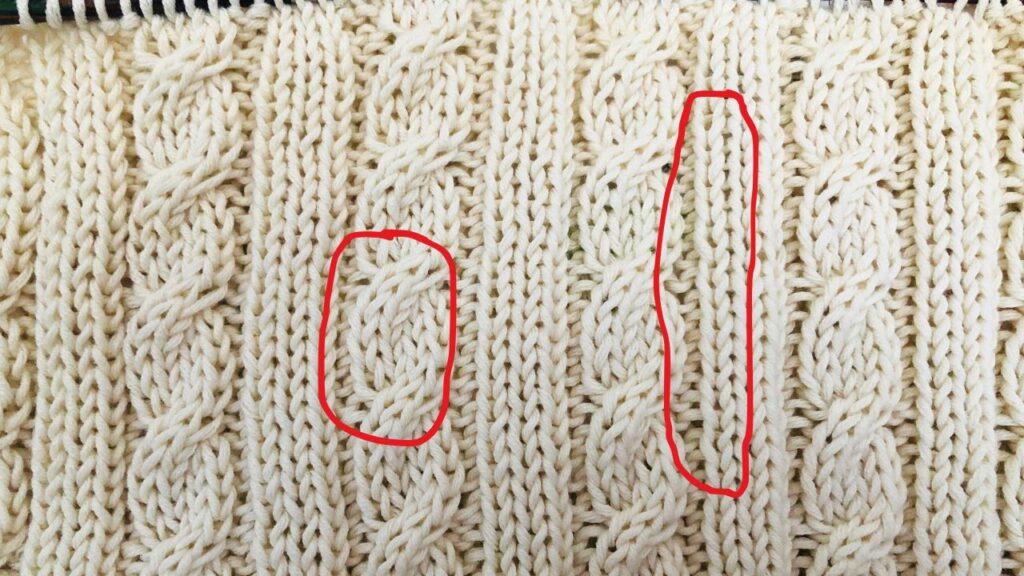I knit something with Aran patterns every year.
But for a long time, I had one big problem — my Aran patterns didn’t look neat.
Was it because they were hand-knitted?
I almost gave up thinking that was the reason.
Then I saw a beautifully hand-knitted Aran sweater online, and it was so perfect!
Of course, it was made by a professional knitter, but if a hand-knitted sweater can look that perfect, there must be a trick behind it.
And finally, I found it — the secret to clean, beautiful Aran stitches.
In this article, I’ll share my favorite cable knitting tips and tricks that solved my problem, so you can try them too.
Why Aran Patterns Often Look Uneven

When I knitted cables or diamond motifs, I always noticed that the last knit stitch before a purl became loose.
Also, when there were three knit stitches before a purl section, the last of the three was always looser than the rest.
Both problems had one thing in common:
They happen when a knit stitch comes right before a purl stitch.
I even posted about this on X (formerly Twitter), asking if anyone knew how to fix it.
Someone kindly shared a helpful blog post with me:

How to Avoid Loose Purl Stitch After Stocking Stitch
(This blog is in Japanese. You can use your browser’s translation tool to read it in English.)
According to that post, the looseness happens because the movement from knit to purl makes the yarn slack — the way we pull yarn for a knit stitch and a purl stitch is different, so the last knit stitch before the purl becomes larger.
The blogger also mentioned that when we bring the yarn to the front to purl, it easily loosens the tension.
So, that’s the reason!
The same thing can even happen in 2×2 rib knitting, not just in Aran patterns.
I had knitted many rib patterns before but never noticed it until now.
The One Simple Trick to Make Your Aran Stitches Beautiful

Now that we know why it happens, let’s see how to fix it.
The blog I mentioned suggests two things:
- Pull the stitch a little higher as you knit.
- Keep the tension tight when switching from knit to purl.
These are helpful, but with slippery yarns — like the cotton yarn I’m using in this project — it still tends to loosen by the next stitch.
So here’s the method that finally worked for me:
Normally, I knit using the middle part of the needle, but for these specific stitches, I use just the tip.
This makes the tension slightly tighter — and the difference is amazing.
My Aran pattern, which used to look messy, suddenly became neat and sharp — like it was knitted by someone else!
After applying this tip, here’s how my knitting looked:
Using the needle tip for the last knit stitch before a purl made a huge difference.

My Aran pattern, which used to look messy, suddenly became neat and sharp — like it was knitted by someone else!
Everyone’s knitting tension is different, and the result may vary depending on your knitting style — English (throwing) or Continental (picking).
The original blogger uses the English style, while I use the Continental style.
Still, if you often knit loosely like I do, this tip might really help.
Give it a try and see how beautifully your Aran pattern turns out!



The blog I referenced is written in Japanese, but you can use your browser’s translation feature to read it in English.